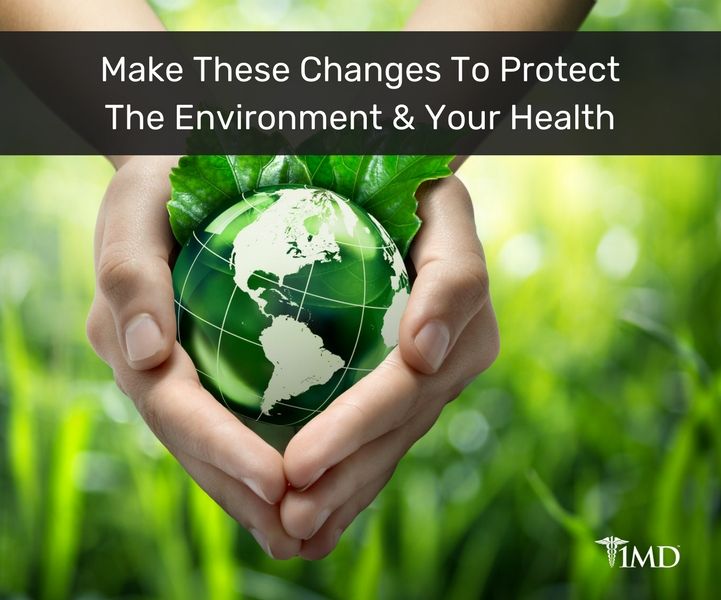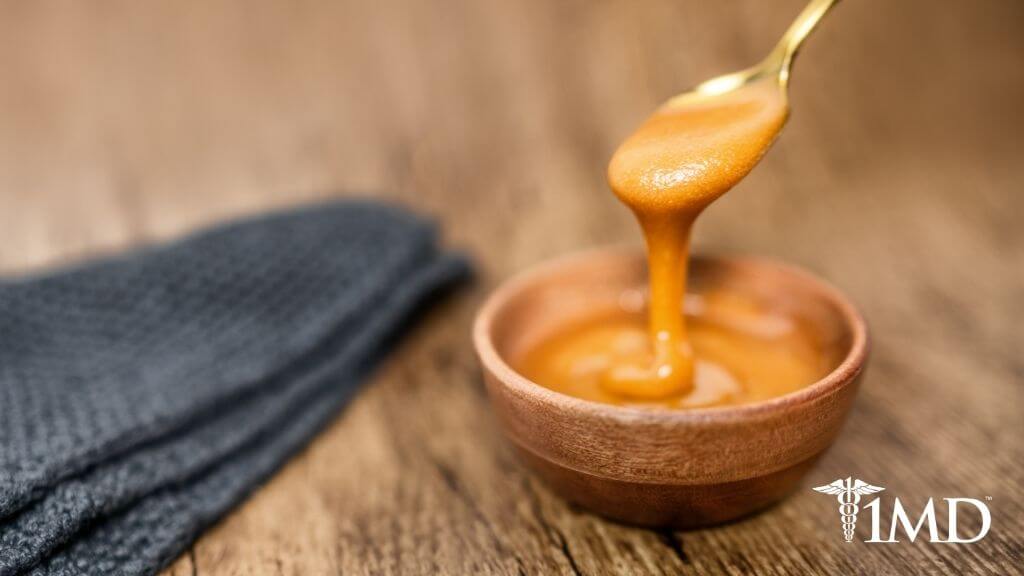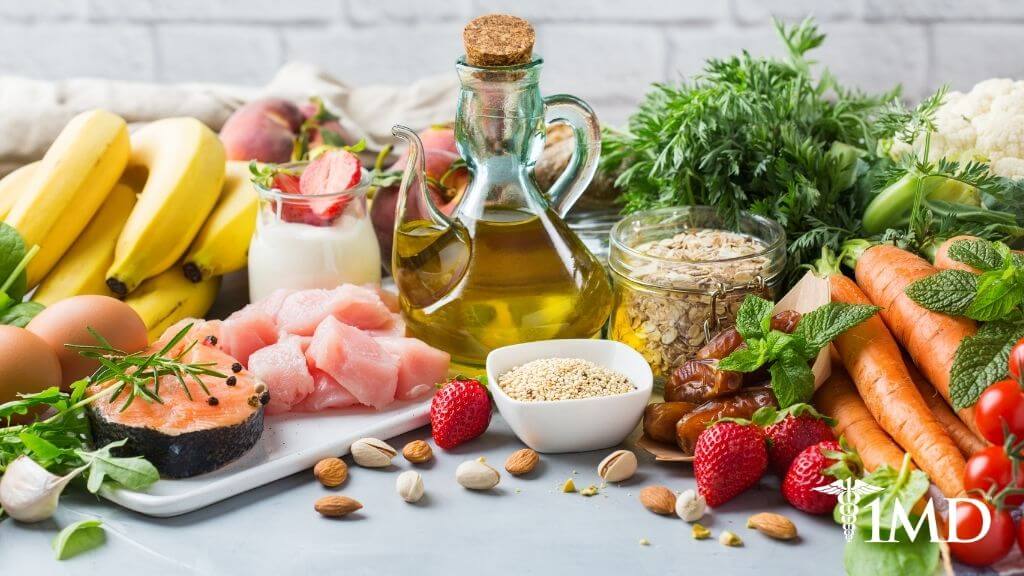10 Ways To Go Green In The New Year
13 minute read

Making some simple changes can limit your exposure to toxic chemicals, save energy and money, and even impact the environment. Many household cleaners, personal care products, and processed foods contain potentially harmful ingredients so just switching up how you fill your shopping cart can make a significant difference to your health.
| Related: Forest Bathing Melds Nature With Mindfulness To Improve Health |
Changing your light bulbs, doing the wash in cold water instead of hot, and turning down the thermostat are well-known ways to save energy. Carpooling, using public transportation, and telecommuting one day a week are also promoted to decrease pollution and save resources.
The kitchen and bathroom cabinet also provide numerous opportunities to limit chemicals and to live a green lifestyle.
Avoid These Cosmetic Ingredients
In addition to health hazards, chemicals in beauty products impact the environment when they end up in the water supply and the ecosystem. These chemicals don’t break down and cause the most damage when they are washed down the sink, ending up in lakes, streams, and the water supply.
Sodium Lauryl Sulfate/Sodium Laureth Sulfate: Present in over 90 percent of personal care and cleaning products, these chemicals allow for foaming and can be an irritant to skin, lungs, and eyes. In addition, when combined with other chemicals, sodium lauryl sulfate can form carcinogenic nitrosamines and may also lead to kidney or respiratory damage.
Parabens: These waxes are included in formulas to prevent bacteria, mold, and yeast in cosmetic products. However, parabens mimic estrogen in the body and have been associated with increased breast cancer risk. In fact, parabens have been identified in biopsy samples of breast tumors.
| Related: 10 Inflammatory Chemicals You Need to Quit |
Phthalates: Although these chemicals are commonly thought of as present in plastic containers, they are also used in nail polish (dibutyl phthalate), perfumes and lotions (diethyl phthalate), and hair spray (diethyl phthalate). Phthalates are known endocrine disruptors, associated with increased breast cancer risk, early breast development, and reproductive birth defects in males and females.
Additives: Synthetic colors and fragrances may also present health risks. D&C on the label of your personal care product followed by a color and number designate synthetic colors derived from coal tar or petroleum. These additives have carcinogenic properties and have been banned in the European Union.
Fragrances: This vague assortment of chemicals is found in not only perfume but in hair products, body wash, and moisturizers, as well as cosmetics. The Environmental Working Group (EWG) Skin Deep Database considers the presence of fragrance in its product database for risk of allergic reaction, respiratory issues, and reproductive system disruption.
Formaldehyde: This preservative is added to body washes, cleansers, shampoo, conditioner, as well as eye shadows, nail polish, and nail polish treatments to inhibit bacterial growth. Formaldehyde is labeled a human carcinogen by The International Agency for Research on Carcinogens and may also be harmful to the immune system.
Toluene: Found in nail polish and treatments, as well as hair color/bleaching products, this chemical is sourced from petroleum or coal tar and appears on labels as benzene, toluol, phenylmethane, methylbenzene.This chemical has been linked to delayed fetal development when pregnant women are exposed to vapors, as well as immune system toxicity.
Toss Out The Hand Sanitizer
For the past three decades, hand sanitizers have been a staple for many who spread onto hands in hope of avoiding germs and bacteria. Anti-bacterial and anti-microbial formulas have made their way into everything from soaps to household cleaners but are they effective and safe?
The United States FDA has issued a policy that manufacturers can no longer market products with any of 19 ingredients, including triclosan and triclocarban, as “antibacterial due to lack of evidence that they are any more effective than soap and water to prevent illness or germs.
In addition, the FDA is requiring manufacturers to provide safety data for benzalkonium chloride, benzethonium chloride, and chloroxylenol, three additional ingredients in personal wash products.
Research indicates that long-term exposure to these chemicals may present environmental and health hazards, including bacterial resistance and hormone disruption. Instead of reaching for the hand sanitizer, wash hands with old-fashioned soap and water.
Environmentally Friendly Morning Coffee
According to numerous studies, coffee may provide health benefits but the way you prepare and serve coffee can change its impact on the environment. While coffee pod systems have become a popular way of preparing coffee by the cup, the pods are neither recyclable nor biodegradable, which makes them an environmental hazard. If you prefer to make your coffee in a pod machine, invest in reusable pods and fill with your own grounds.
When choosing your beans, the most environmentally friendly are organic, Fair Trade, and grown as close to where you live as possible. Organic beans are not grown with synthetic pesticides and herbicides. Fertilizer doesn’t compromise the water supply and erosion is kept at a minimum.
In addition, look for shade-grown varieties. Coffee trees in larger tropical forests actually provide a home for migratory birds and other endangered wildlife. This shade can provide a habitat for about 150 different species, supporting biodiversity.
Forgoing styrofoam or paper cups can have an environmental impact by decreasing the chances that your cup will end up sticking around for eternity in landfill. In the US, over 16,000,000 disposable cups are used each year.
Plastic lids are made from styrofoam or polystyrene, which are both neurotoxins and carcinogens, especially when heated. Neither is recyclable or biodegradable. Look for a reusable cup that is plastic-free (including the lid) and made from either stainless steel or glass.
Go Vegetarian At Least One Day Per Week
Meatless Mondays have become a popular trend but replacing meat and animal products any day or days can have significant environmental and health impact. Numerous studies have connected consumption of red and processed meats in particular with an increased risk for various cancers, cardiovascular disease, Type 2 diabetes, and obesity.
On a global scale, the meat and dairy industries are responsible for about 20 percent of man-made greenhouse gas emissions, according to the United Nations Food and Agriculture Organization.
Replace tonight’s steak or roast chicken with a plant-based entree to support your health, as well as the environment. Choose protein sources such as beans and legumes such as tofu, tempeh, and lentils and replace milk or cream with nut milk.
Change Your Cookware
Nonstick pans may make for easier cleanups and less oil but to create that surface, they are coated with fluoropolymers, which break down into compounds such as perfluorooctanoic acid (PFOA), which has carcinogenic properties and may be linked to risk for cardiovascular disease. These chemicals can get into your food, as well as the air under high heat.
Replace your nonstick cookware with cast iron, which can be pre-seasoned for a similar effect.
Consider Using A Grocery Delivery Service
Instead of endless trips to the grocery store or specialty shops to pick up last-minute ingredients after work, order your groceries from a delivery service. Not only will this significantly reduce CO2 emissions but you’ll save money and will be more likely avoid impulse purchases that may include harmful additives, excess sugar, and unhealthy ingredients.
Stack Up On DIY Frozen Meals
Instead of perusing the freezer aisle for prepackaged frozen meals, freeze your own leftovers or do a one-day meal prep. You’ll save money, focus on whole foods, and avoid preservatives or fillers. In addition, switching from microwavable meals will help the environment by avoiding cardboard boxes, packaging, and plastic, which reduces greenhouses emissions.
But Keep Your Freezer Stocked
An empty freezer consumes much more energy than one that contains food. Instead of buying processed dinners and sides, make your own freezer-friendly meals by freezing leftovers. Freeze seasonal fruits such as blueberries to throw into smoothies or baked goods. They’ll last up to a year.
Full meals that can be frozen with good results include soups, chili, breaded chicken cutlets, sauced pasta, tacos, enchiladas, turkey burgers, and casseroles, as well as starters like pizza dough or meatballs.
Watch Out For Seafood
When you’re planning meals or even ordering in a restaurant, consider which fish may be endangered or that are high in mercury and PCBs, as well as other contaminants. The Monterey Bay Aquarium has an app that can alert you to endangered fish, as well as those that may present health risks.
Compared to other animal-based protein sources like beef, fish produce a fraction of greenhouse emissions. However, aquaculture or fish farming has presented numerous environmental and health concerns so some prefer to stick with wild fish.
Antibiotics are utilized in farmed salmon, leading to overuse of antibiotics and the development of resistant bacteria strains. In addition, farmed fish are often fed pellets instead of their typical diet in nature, which includes krill and other wild fish, which can compromise their nutritional profile. Scientists are working on innovating healthier ways to farm fish without antibiotics.
Certain species of seafood are endangered or even close to extinction, including Wild Atlantic salmon, which may not be caught commercially. Salmon, however, is a good source of omega-3 fatty acids. Most salmon in markets and restaurants is farmed and labeled Atlantic salmon, imported from Chile or Canada. Wild salmon from Alaska is relatively low in contaminants.
Tuna, a favorite choice for many lunches and sushi, can present health and environmental hazards. Big Eye, yellowfin, known as ahi, and bluefin are high in mercury and should be consumed infrequently. Bluefin is also slow to reproduce, which coupled with overfishing has caused this seafood to be on the endangered species list.
Most tuna are commercially caught using long lines, which may also catch seabirds, turtles, and other marine animals. Pole and line-caught tuna are better options. Canned tuna may contain high levels of mercury from air pollution as it rains into the water supply.
This is especially toxic for young children with developing brains, nervous systems, brains, hearts, kidneys, and lungs. Mercury content varies, depending on type of tuna. The mercury level of solid white (Albacore) tuna is almost three times that of light tuna, which is mostly the smaller skipjack. Canned salmon may be a better option.
Shrimp are often farm-raised. The best choice would be domestic farmed shrimp but most shrimp sold in the United States is farmed in either Southeast Asia or Latin America, which have lax or unenforced environmental standards.
Change Up Your Popcorn Habit
Instead of tossing a bag of popcorn into the microwave, use an air-popper or coat a stovetop pan with some mild oil to pop the old-school way. The lining in those microwavable bags has been lined with perfluorooctanoic acid (PFOA), which the International Agency for Research on Cancer (part of the World Health Organization) considers to be “possibly carcinogenic to humans.”
While certain perflourinated chemicals have been banned, others are still used in microwave popcorn bags, as well as pizza boxes and other food packaging. These chemicals are pervasive throughout the environment. In fact, according to one Center for Disease Control study, over 98 percent of Americans have at least a dozen of these chemicals in their blood.
These chemicals are non-biodegradable, which means they do not break down or decompose. They lurk in the environment and in our bodies for years and can even be passed on through the umbilical cord. In addition, perflourinated chemicals have been wildlife throughout the world.
Perflourinated chemicals are associated with numerous health risks, including kidney cancer, testicular cancer, ulcerative colitis, thyroid diseases, high LDL cholesterol, and pregnancy-induced hypertension.
Aside from the packaging, the artificial colorants and flavorings in microwavable popcorn may present a health risk. Various chemicals used to give microwaved popcorn that buttery flavor have been indicated to be a factor in “popcorn lung” disease in factory workers from the vapors, which may cause respiratory system damage.
The Bottom Line
Cleaning up your diet and your beauty regimen can provide benefits for both your health and for the environment. By going green, reducing the use of toxic chemicals, eliminating extra packaging, and buying close to home, you can reduce your carbon footprint and the impact of chemicals on your body, as well as the environment.
Read Next >>> 12 Tasty & Nutritious Buddha Bowl Recipes
-
https://www.prevention.com/health/70-easy-ways-to-green-up-your-life/slide/8
-
https://www.washingtonpost.com/national/health-science/soaps-makeup-and-other-items-contain-deadly-ingredients-say-consumer-advocates/2012/01/24/gIQAeJ56cQ_story.html?utm_term=.32f5ae42a20a
-
https://www.fda.gov/newsevents/newsroom/pressannouncements/ucm517478.htm
-
http://www.ewg.org/skindeep/#.Whh550qnGUk
-
https://www.marthastewart.com/274277/freezer-friendly-meals
-
https://www.edf.org/oceans/mercury-alert-canned-tuna-safe-eat
-
https://www.nature.org/greenliving/gogreen/everydayenvironmentalist/buy-sustainable-coffee.xml
-
https://www.cdc.gov/niosh/topics/flavorings/exposure.html










 Health Guides
Health Guides
 Latest Research
Latest Research


